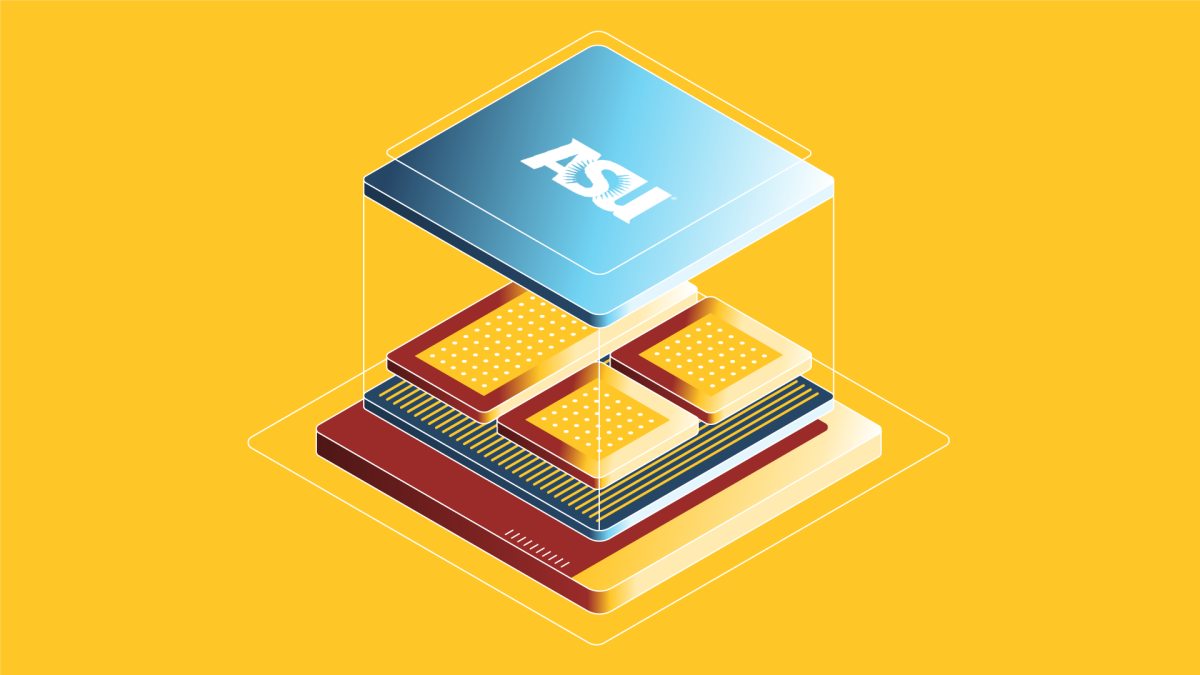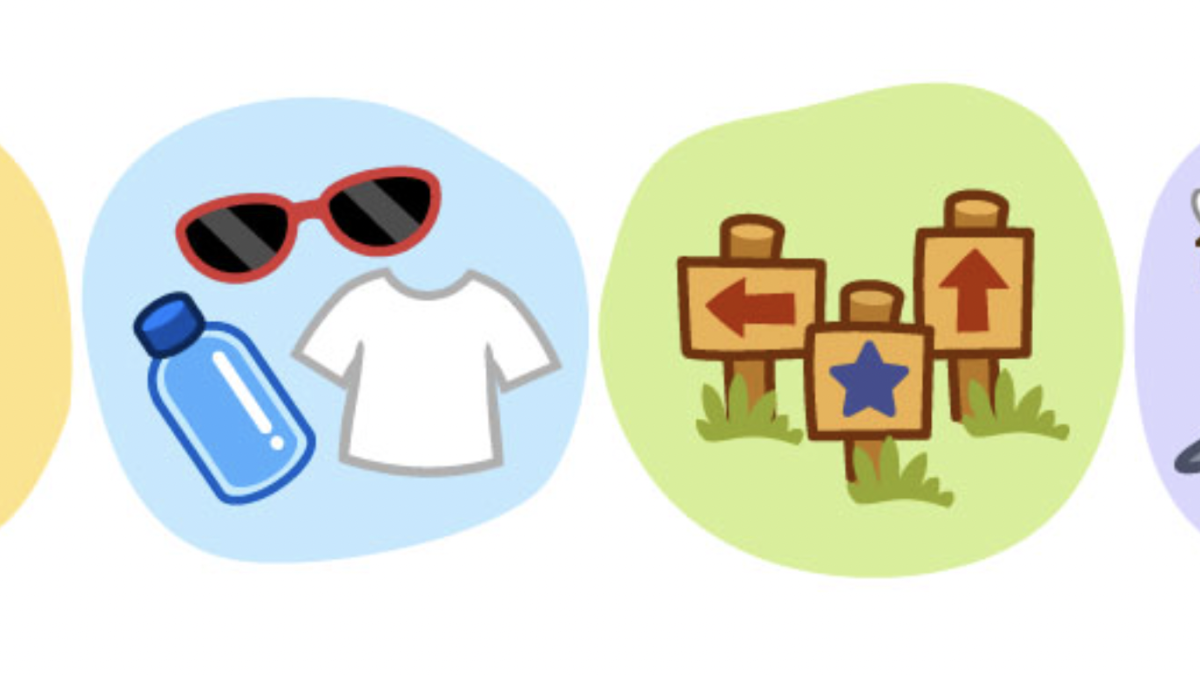Innovating education during a pandemic with ASU Sync
ASU faculty rise to the occasion, finding ways to engage students virtually

Editor’s note: This story is being highlighted in ASU Now’s year in review. Read more top stories from 2020.
Since the dawn of modern education, those tasked with imparting knowledge to curious minds have agreed with relative consensus on one thing: Nothing can replace in-person instruction.
Then along came something called COVID-19, and everything we thought we knew about traditional notions of teaching and learning were suddenly and necessarily challenged.
Now, it would seem the question is (cue overly dramatic movie trailer voice): In a world where social distancing has made the option of remote learning essential to efforts to control the spread of the virus, is in-person instruction the only way?
According to several professors across the disciplinary spectrum at Arizona State University who have spent the better part of 2020 innovating a variety of ways to engage students virtually, the answer is clear.
School of Geographical Sciences and Urban Planning Professor Ronald Dorn and senior climatology PhD student Ryan Heintzman took heart as students in their physical geography lab course continued to immerse themselves in the environment, even going beyond the Phoenix area to observe such phenomena as rain shadows on majestic Hawaiian mountains (and all without having to pay the price of an airline ticket).
The College of Health Solutions’ speech and hearing science faculty were pleasantly surprised when the variety of clients their students were able to interact with through the ASU Speech and Hearing Clinic grew rather than diminished.
And even Hugh Downs School of Human Communication Principal Lecturer Jennifer Linde, who previously believed devoutly that in-person instruction was the only way to get the kind of intimate, face-to-face interaction needed to learn communication skills, considers herself a convert.
“I mean, arguably, when my face and your face are talking, (even though it’s online), we're still face-to-face,” Linde said. “I know about their lives. I know about their dogs; I see them. It’s just built this really authentic, amazing connection. I mean, it’s technology and it's accessibility. People can have access to professors and professors can have access to students, and that’s something I think that we should embrace.”
The success these professors and others have enjoyed has been due in large part to ASU Sync, a novel learning approach introduced this year that provides students with fully remote, technology-enhanced instruction, while still allowing them to attend and interact with live, in-classroom lectures via Zoom. It is one of the three learning modalities available to students, in addition to iCourses and ASU Online.
As with any new advancement, there have been learning curves and growing pains. For folks in the Speech and Hearing Science program, one of the biggest challenges presented by remote learning was ensuring students were still able to get the clinical hours they needed while maintaining the privacy of patients and clients (until recently, HIPAA laws did not allow for telepractice). And though most of Dorn’s students grew up playing video games, the idea of one that gives you an actual course grade took some getting used to.
“You think ‘video games,’ and you think, ‘Ah, this is going to be easy,’” he said. “No. You still have to learn the science.”
That said, Dorn still wants his students to have fun, and the games he has implemented in his physical geography lab offer plenty of that. Students can choose from a number of avatars through which they can explore different regions around the world, including Hawaii, the Grand Canyon and northern Arizona’s San Francisco Peaks. Along the way, they accrue experience points and level up. Sometimes they fail, but the beauty of the video game model is that they can go back and try again without their grade suffering.
“They're watching their grade level up from C to C-plus to B-minus to B, and actually, a lot of students keep going past A-plus, because, I think, they're having fun," Dorn said. "About 30% of the students go beyond the threshold needed for an A-plus.”
Before the pandemic, speech and hearing faculty and students had some experience with telepractice and a program called Simucase that presents simulated clinical interactions, both of which help students gain experience and clinical hours. But once social distancing became mandatory, they began to rely more heavily on the modalities.
“At first, when we moved online to telepractice, most of us had never done it before, and in fact, the state of Arizona did not have the legislative code in place that would allow for telepractice,” said Denise Stats-Caldwell, a clinical associate professor of speech and hearing science. “So we really had to pivot quickly.”
She and others in the department credit student optimism and flexibility for making it work.
“I have been so impressed with students. They have been so flexible,” Stats-Caldwell said. “Sometimes when people are called upon to work in situations where there are a lot of unknowns, you don't see the best attitudes or the best flexibility. But that has not been the case with our students.”
According to Maria Dixon, a speech and hearing sciences clinical professor, an added benefit of going remote has been the ability to expand the clinic’s reach.
“One of the things that we are charged with doing is to make sure that students have a breadth of experience and also a certain number of hours of clinical experience, and we've been able to meet those needs, and students have still been getting the variety of experiences with different populations that they need,” she said. “In fact, they probably have been able to get some experiences that they wouldn't have gotten if we had just maintained the in-person clinical experiences. Because we have access to a lot more clients now.”
And thanks to a huge effort this summer by the University Technology Office to outfit classrooms with cameras, screens and microphones, students were still able to collaborate with one another, regardless of their location, something Dixon said is “a big component of how we approach academic learning and clinical practicum in our unit.”
As for Dorn, he and his team of teaching assistants put together a series of online tutorials that are available to students any time day or night. But for those students who still need extra help or who prefer to work through issues in person, teaching assistants and peer mentors are also available to meet with on campus during regular lab times.
Overall, he sees this as an opportunity to give students one more way to learn. To that end, teaching assistant Heintzman is currently surveying students about their experience with the course in order to identify areas to improve.
"Ryan has been my true partner in this innovation," Dorn said. "Without his vision and brilliance in pedagogy — what we are doing could not happen."
Dorn added, "We want to continue with the view that we need lots of options. (In the future, this video game model) would be a wonderful option for those who like learning that way. And for those that want to learn by being outside, they can do that, too. So I guess I view this as a way to take advantage of what’s going on now and come up with completely new ways of helping students learn.”
During a recent session of Linde’s oral interpretation of literature course, classmates Desirae Gutierrez and Griffin Lynch joined her via Zoom to perform a reading of Flannery O’Connor’s short story “A Good Man Is Hard to Find.”
They weren’t able to meet in person this semester, but their casual candor with one another before the reading got underway was apparent. That’s another thing Linde was concerned about: the ability of students to build a sense of community remotely. But both Gutierrez and Lynch said that it has actually made it somewhat easier for them to meet, since time and distance are less of an issue.
As their reading progressed and the true nature of “the Misfit’s” intentions became clear, so too did the realization that ASU Sync just might be on to something.
“I'm amazed at my students this semester,” Linde said. “I'm always impressed with students and their capacity to meet you wherever you are as a teacher, but these particular classes have really taught me a lot. … (The students) are patient. They’re creative. They push boundaries … and I've seen levels of engagement in my classes that I haven’t seen in semesters, so for me, that's really exciting. The possibilities are amazing, and it's been so much more successful than I anticipated it being.”
Top photo: Student using a laptop in an ASU classroom. Photo by Jared Opperman/ASU Enterprise Marketing Hub
More Science and technology

Advanced packaging the next big thing in semiconductors — and no, we're not talking about boxes
Microchips are hot. The tiny bits of silicon are integral to 21st-century life because they power the smartphones we rely on, the cars we drive and the advanced weaponry that is the backbone of…

Securing the wireless spectrum
The number of devices using wireless communications networks for telephone calls, texting, data and more has grown from 336 million in 2013 to 523 million in 2022, according to data from U.S.…

New interactive game educates children on heat safety
Ask A Biologist, a long-running K–12 educational outreach effort by the School of Life Sciences at Arizona State University, has launched its latest interactive educational game, called "Beat the…